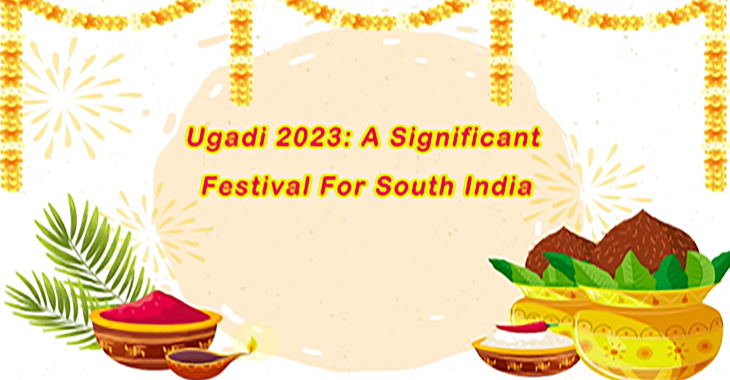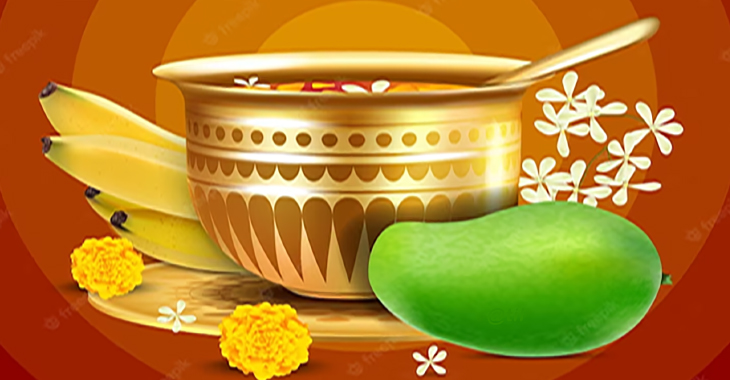Ugadi 2023: A significant festival for South India

Hindus in the southern Indian regions of Andhra Pradesh, Karnataka, and Telangana observe the festival of Ugadi. According to the Gregorian calendar, the festival is observed on January 1 to commemorate the start of a new Hindu calendar year.
Hindus in the states of Andhra Pradesh, Telangana, Karnataka, and Goa celebrate this occasion under the names Samvatsaradi (Telugu new year) and Yugadi (Kannada new year). The words “Yugadi” and “adi,” which indicate the beginning and age respectively in Sanskrit, were combined to create the word. It denotes the start of a new era in plain terms. In Karnataka, Andhra Pradesh, and Telangana, this festival is observed with great zeal and fervor.
Yugadi is a symbol of fresh starts. It is believed that on this day, Lord Brahma created the universe.
In the 12th century, Indian mathematician Bhaskaracharya identified Ugadi as the beginning of the new year.
In various states, the festival goes by distinct names. It is referred to as “Ugadi” by the inhabitants of Andhra Pradesh and Karnataka, “Gudi Padwa” by the inhabitants of Maharashtra, and “Cheti Chand” by the Sindhis. Each state celebrates this festival in a unique manner.
Hindu mythology holds that Lord Brahma began creating the world on the festival of Ugadi. To commemorate the start of Lord Brahma’s creation of humanity, the first day of the nine-day holiday known as Chaitra Navratri, which honors the nine manifestations of Goddess Durga, is observed as Ugadi.
How the festival is celebrated?
The day is observed by painting vibrant designs called Muggulu on the floor, hanging torana—mango leaf decorations—on doors, purchasing and giving gifts like new clothing, helping the needy, giving oil massages and special baths, making and sharing pachadi, and visiting Hindu temples.
Ugadi is a holiday commemorating the first day of the Hindu lunisolar calender. Mango leaf decorations are created throughout the home, and colorful decorations are made for the floor. To commemorate Ugadi, people dress up, get oil massages, take baths, and then go to temples to perform puja.
Farmers assemble in big groups in the regions of Tumakuru and Chitradurga as they wait for the moon to rise. This is so that the harvest’s abundance can be predicted based on the moon’s orientation.
The populace gets up before dawn. They take a holy oil bath early in the morning and put on fresh clothes to begin the Ugadi day. As an auspicious record of the celebration, the women create lovely rangoli in the shape of floral patterns on the area right outside their homes.
On this day, it’s customary to buy and give presents like new clothing, donate to the needy, take a special bath and receive an oil treatment, prepare and share a special dish called pachadi, and go to Hindu temples.
People have several reasons to celebrate the new year during this well-known Indian holiday.
Home Decoration

People get up early to clean their homes, decorate them with flowers, and put on new outfits as this event approaches. Festoons made of mango leaves are fastened to the doorways.
Making of Rangoli
The residents of the house also create lovely rangolis and share presents on this day.
Visit Temples
In addition to this, people go to temples and participate in charity events. People also cook a variety of foods, such as Pachadi, a festive food for the Ugadi celebration.
Ugadi Pachadi

Ugadi Pachadi combines the flavors of sweet, acidic, salty, pungent, spicy, and bitter. It represents the fact that emotions such as joy, sadness, rage, disgust, fear, and surprise are all present in existence.
Neem flowers, fresh mango, jaggery, pepper powder, coconut, and salt are used to make this.
Tamarind – sour taste – unpleasantness.
Jaggery – sweet taste – joy or happiness.
Unripe or raw mango – tangy, astringent taste – surprise.
Neem flowers – bitter taste – sadness.
Black pepper – spicy, hot taste – anger.
Salt – salty taste – fear.
Read More
International Women’s Day 2023: Get Inspired By the Indian Women

